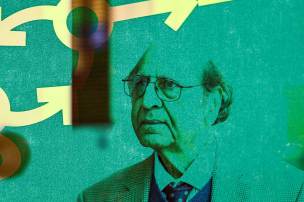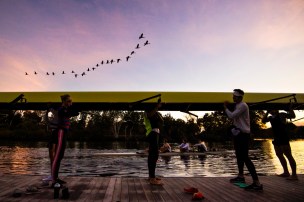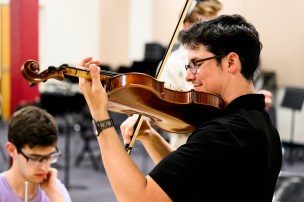Published on
What makes a movie fight scene hit?
Stage combat expert breaks down iconic fight scenes from “Mission: Impossible,” “The Matrix,” “The Princess Bride” and “The Legend of Drunken Master.”
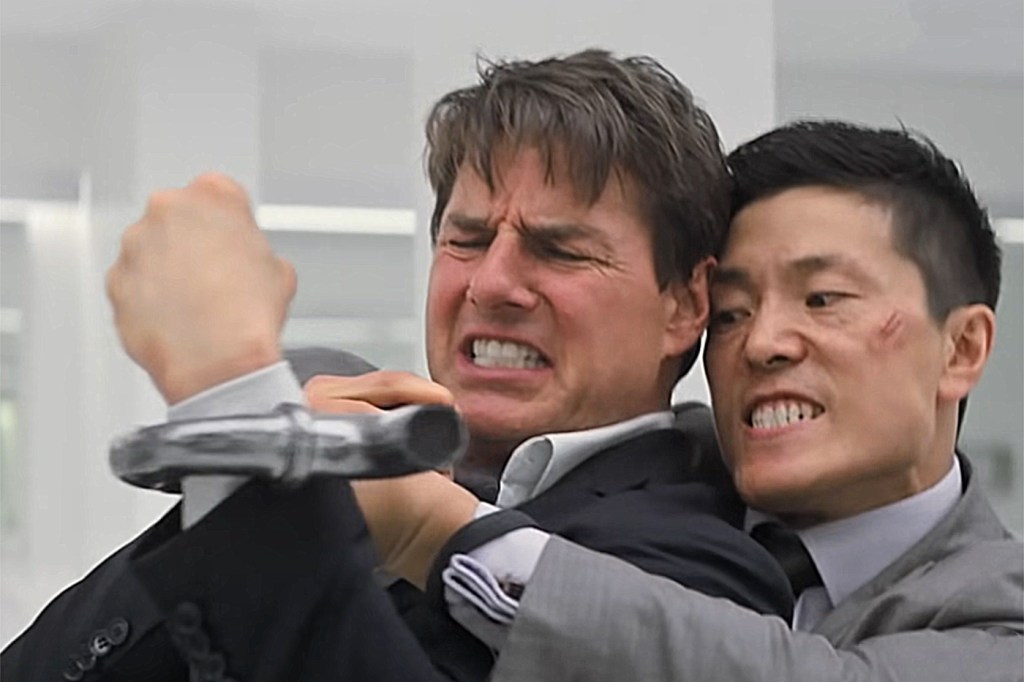
When it comes to movies, there are few things as thrilling as a well-placed punch to the jaw or a kick to the gut.
From a fight on top of a moving train in 1903’s “The Great Train Robbery” to the groundbreaking slow-motion “bullet time” of “The Matrix,” fight scenes have kept audiences glued to their seats ever since they could see movies in the first place. But what separates a great fight scene from a mediocre one? What makes a scene like the fight between Neo and Agent Smith in “The Matrix,” the bathroom fight in “Mission: Impossible –– Fallout” or any of Jackie Chan’s awe-inspiring martial arts fights into something iconic?
To figure out what makes some fight scenes hit and others miss, Northeastern Global News sat down with Jesse Hinson, a teaching professor in Northeastern University’s theater department who specializes in fight choreography and violence design for the stage. Hinson knows a thing or two about throwing punches and designing fights. Here, he breaks down some of the most iconic movie fight scenes, from “The Matrix” to “Princess Bride,” to drill into the anatomy of action.
Ultimately, a great fight scene isn’t just about how well choreographed it is or how skilled the actors and stunt artists are, he says. Obviously, those elements matter, but it’s how a fight scene “serves to heighten the storytelling, the character development, the plot, the development of the stakes” that can elevate it to another level.
When a hit lands: What makes a fight scene work
That can manifest in a number of ways, depending on the vision of the filmmakers. Introducing a clash of styles –– think the David versus Goliath design of Game of Thrones’ Viper and The Mountain fight –– can imbue a fight with immediate stakes without using any words.
“With David and Goliath, it feels like a size thing, but a clash of styles could mean a grappler versus a striker or you’re armed with a knife and I’m unarmed,” Hinson says. “There’s some sort of deficit, and that’s just always interesting.”
If used well, those kinds of disparities in fighting style, size or personality can give the audience keen insights into the characters as well. “Whatever is significant about your personality and how you go through the world” should be reflected in how someone fights, Hinson says.
Using fight scenes as showcases for character, not just action for the sake of action, separates great fights from forgettable ones. In “Romeo and Juliet,” Hinson notes that it makes sense for a hothead like Tybalt to fight in a direct, aggressive way. And in action movies like the “John Wick” films where the protagonist is near wordless, how a character moves often says more about the person than anything else.
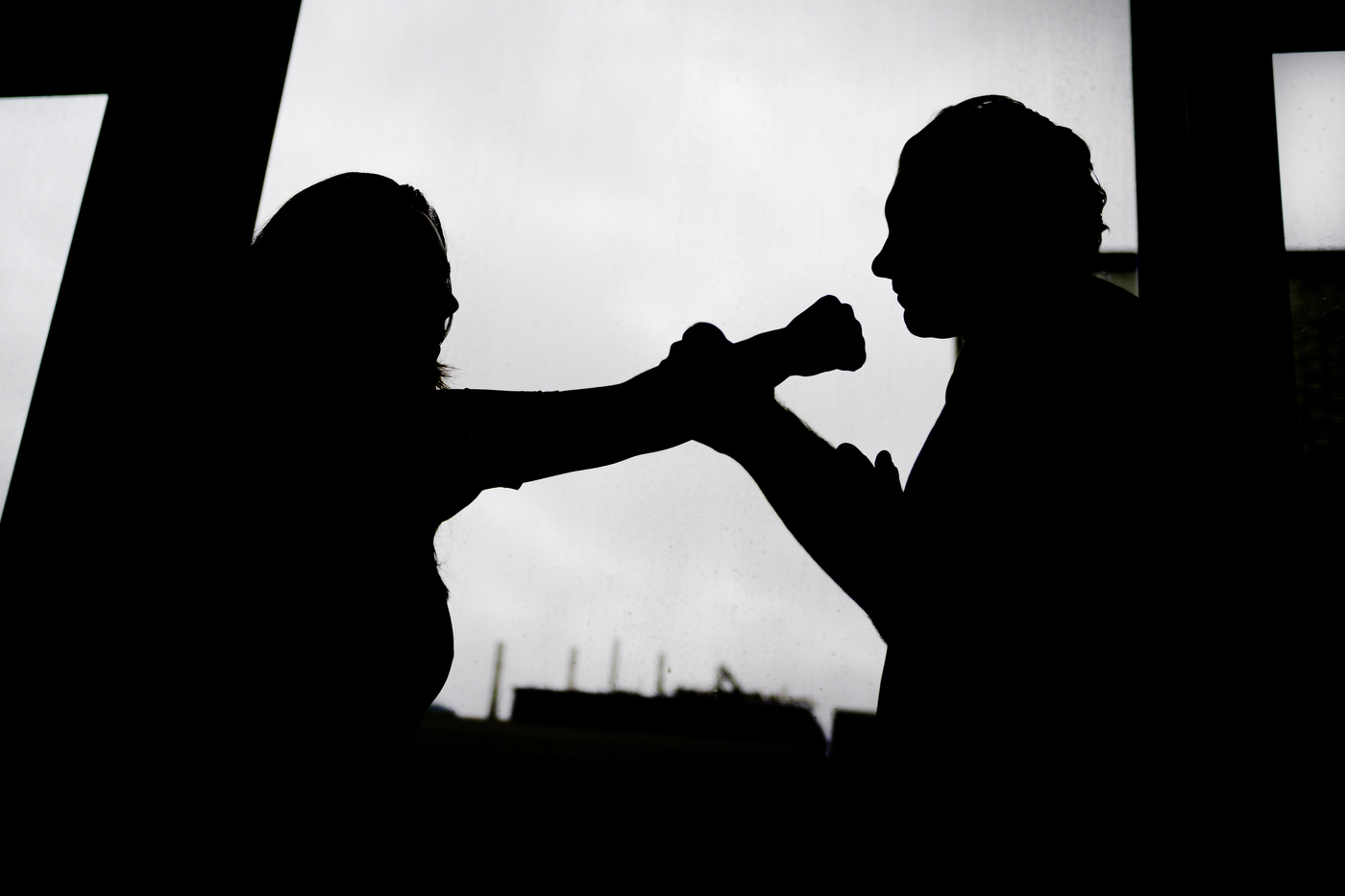
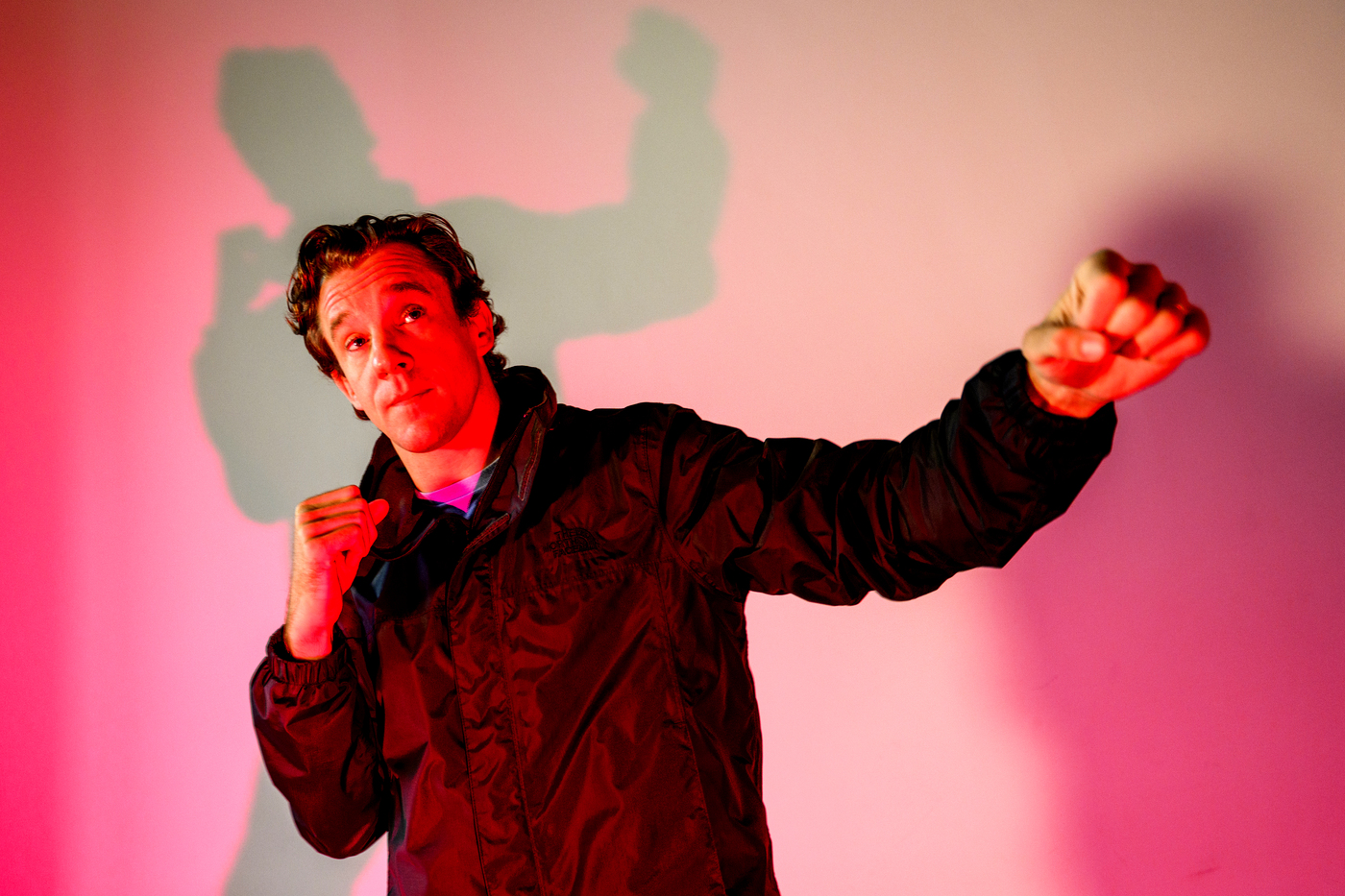
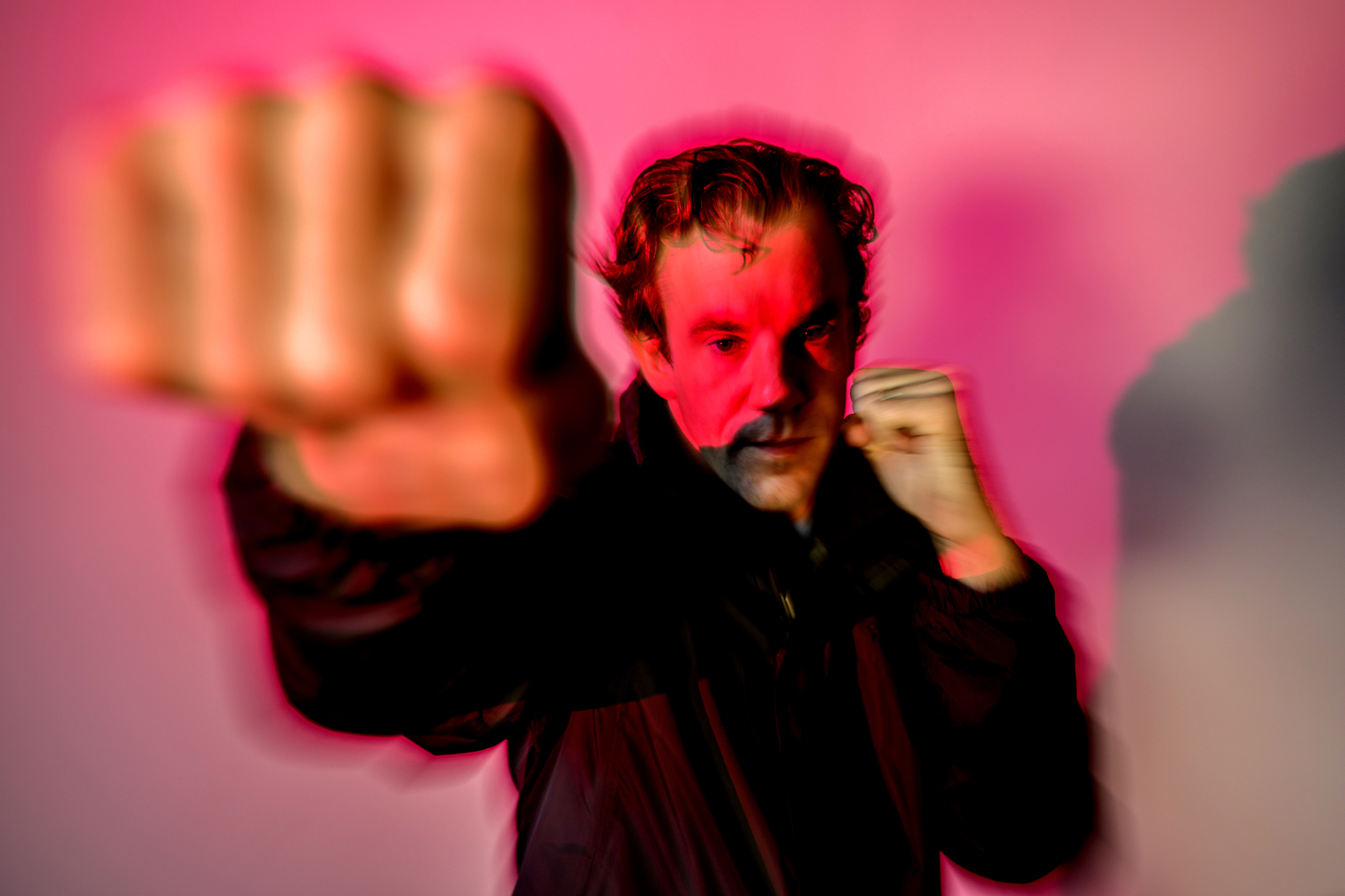
“For a character like John Wick or any of the other Bourne-type folks, it needs to reflect their own training,” Hinson says. “I assume that a lot of those characters’ training is to be as efficient as possible. You’re getting a lot of tight blocks and short strikes to very vulnerable parts of the body: the throat, the eyes, the groin, stuff like that.”
Some of the best action movies also use fight scenes as moments of emotional growth or significant moments in a character’s arc. Putting emotional load bearing on a fist fight might sound strange, but Hinson says it makes perfect sense. A fight scene is conflict –– interpersonal or intrapersonal –– in physical form. How a character learns, fails and navigates through that moment should be just as important as a cathartic dialogue scene.
“When are the opportunities for the character to discover something about themself in real time in the fight, something they didn’t know they had the willpower to do?” Hinson says. “Like the ‘I know kung fu’ moment Neo has in ‘The Matrix.’ That’s magical and fun and a nice way to button things up. You’ve got to look for those moments because they’re gold.”
But not every fight scene has to be a moment for the character to learn something about themselves. Comedy, Hinson says, can be a great tool for fight designers. Like fight choreography, comedy is all about rhythm and knowing when to build tension and when to release it.
Look no further than “The Princess Bride,” where the iconic swashbuckling sword fight becomes a vehicle for physical comedy and banter that keeps the characters and audience on their toes. The two combatants use the environment like a jungle gym, taking every moment to one up one another before physically or verbally jabbing at their opponent.
“It’s the pain of being confident and then disappointed or ‘I have you’ and then switching their sword to the other hand and being like, ‘Actually this is my better hand,’” Hinson says. “It’s that misdirection that delights people.”
“Somebody used to say tragedy is like walking on stage and taking a chair and smashing it to bits, and comedy is walking on stage and tripping over the chair,” he adds. “It’s about imbuing the fight with that spirit or flipping back and forth.”
Swing and a miss: How to break a fight scene
For every “John Wick” or Jackie Chan movie, there are countless movies with forgettable or downright unwatchable fight scenes, Hinson says.
There are times where it comes down to editing. Hinson points out that it’s hard to be thrilled by a fight scene where the action is broken up by too many cuts to different camera angles, which can make it hard to even see what’s happening in any given moment.
But more often than not, Hinson says there are three basic elements that can break a fight scene: targets, tempo and measure.
If the target is off between an actor who is punching and an actor who is receiving, it makes a big difference for safety, but it also factors into the filmmaking and what audiences end up seeing. The end goal is to hide the “golden string,” Hinson says.
“Whatever the operator is doing to the receiver has to break the point of contact and be hidden behind the camera or else we see into that space where there’s non-contact,” Hinson says. “It’s wild how much that doesn’t happen.”
How someone reacts to getting hit also has to match up with where they get hit. Doing this well can help sell how hard a hit lands. Doing it poorly takes viewers out of the fight or, worse, makes the whole scene into an unintentional comedy.
“It also looks weird if I punch toward your ribcage and you react in a different spot,” Hinson says. “It needs to meet up with the level of the strike and the directionality and the sound needs to make sense.”
When it comes to tempo, Hinson calls it “the jazz of the fight.” It needs to shift and change. A relentless fight with no breaks can become an endurance test while a fight with repetitive actions –– the same kind of punch, kick, elbow combo –– becomes a bore.
The measure, or space between combatants, is so foundational to any fight scene that it’s easy for audiences to take it for granted –– until it’s obviously the missing link in a fight scene.
“If the measure is too far apart, then there’s just no possibility for any fight and it feels very low stakes,” Hinson says. “If you’re too close and you’re fighting in a phone booth, then someone’s going to get hurt and the audience won’t see anything.”
A master at work
What does it look like when all the elements that make a fight scene work come together? Just take a look at Jackie Chan, Hinson says.
Most moviegoers are familiar with the actor and martial artist’s Hollywood work –– films like “Rush Hour” and “The Karate Kid.” But it’s in his Chinese action films that Chan’s death-defying stunts, slapstick acrobatics and martial arts prowess really became legendary. Hinson says Chan’s work as a martial artist and acrobat is nearly unrivaled, but the way he communicates character, comedy and stakes take his fight scenes to the next level.
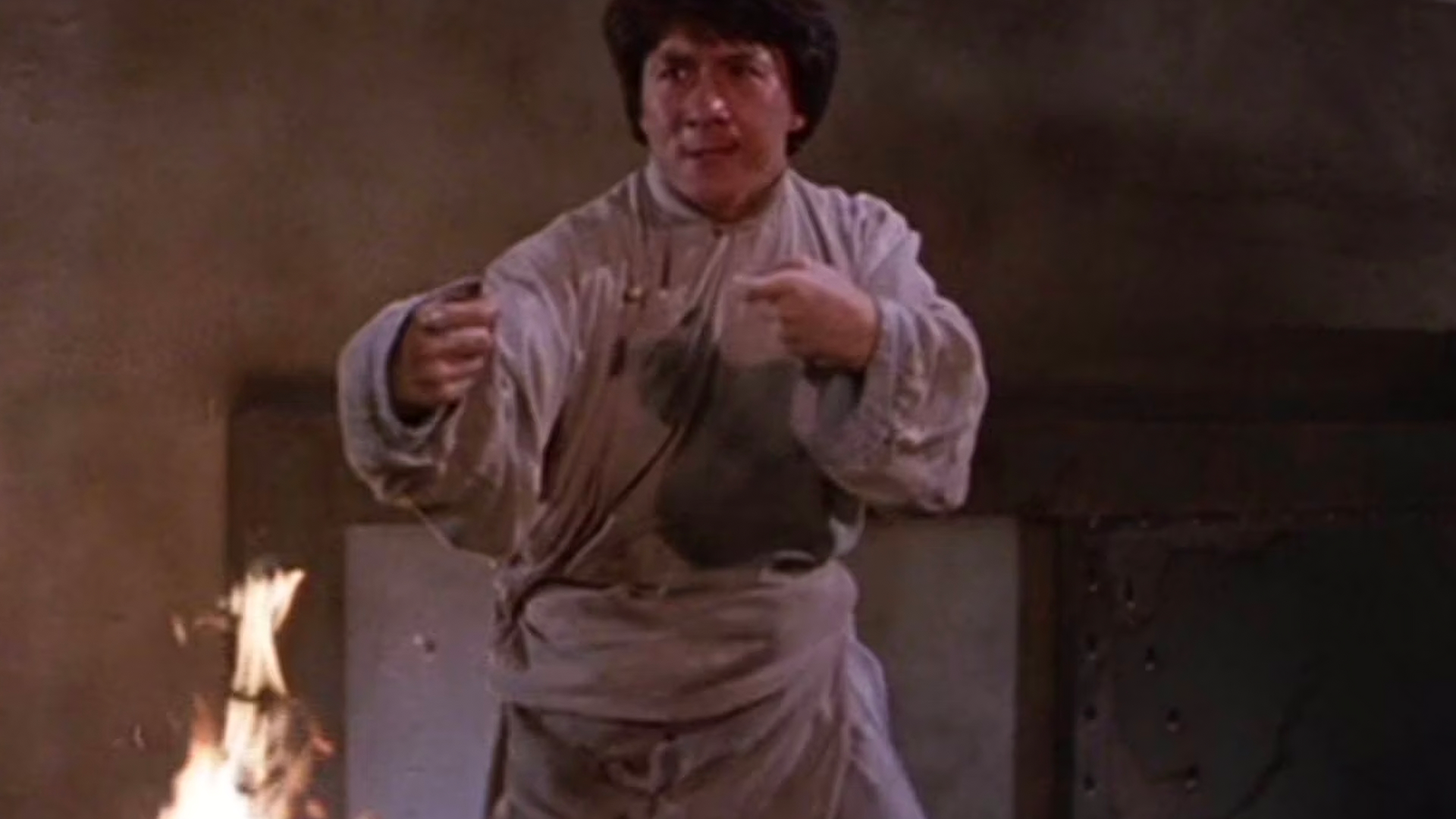
The Legend of Drunken Master
Final fight
Watching the nearly nine-minute long final fight in Chan’s 1994 film, “The Legend of Drunken Master,” Hinson says it’s likely that nearly three-quarters of the fight, which involves fire, hot coals and plenty of objects getting thrown toward actors, was done practically. For a number of safety and cost-related reasons, most Hollywood studio films, outside of the “Mission: Impossible” series and Tom Cruise’s increasingly outlandish stunts, Hinsons says it’s obvious why the purely practical approach isn’t taken. But the difference in quality is obvious.
“Of course, you saw a couple of things where they were doing acrobatic stuff where someone kind of got kicked in their butt into a standing position and that looks like it was something kind of fun done with the camera or things like that, but he [Chan] is something quite else,” Hinson says of the scene.
However, the fight scenes in Chan’s films do something that only the best movie fights do: surprise the audience.
Surprise could come from a character’s choice of weapon –– the many everyday objects Chan picks up and uses in increasingly absurd ways. Or it could come from finding a creative location and taking full advantage of it. The iconic cramped hallway fight in “Oldboy” becomes a claustrophobic death chamber. A fight in Hannibal’s knife-filled kitchen in the TV show “Hannibal” is both ironic, given the titular character’s cannibalistic appetite, and tense since there is a weapon within reach at any given moment.
“Audiences are smart, so you have two choices at any given moment: Give them what they’re expecting or give them something else,” Hinson says. “At the end of the day, if that ‘something else’ isn’t better than what they’re expecting, then you’re screwed.”
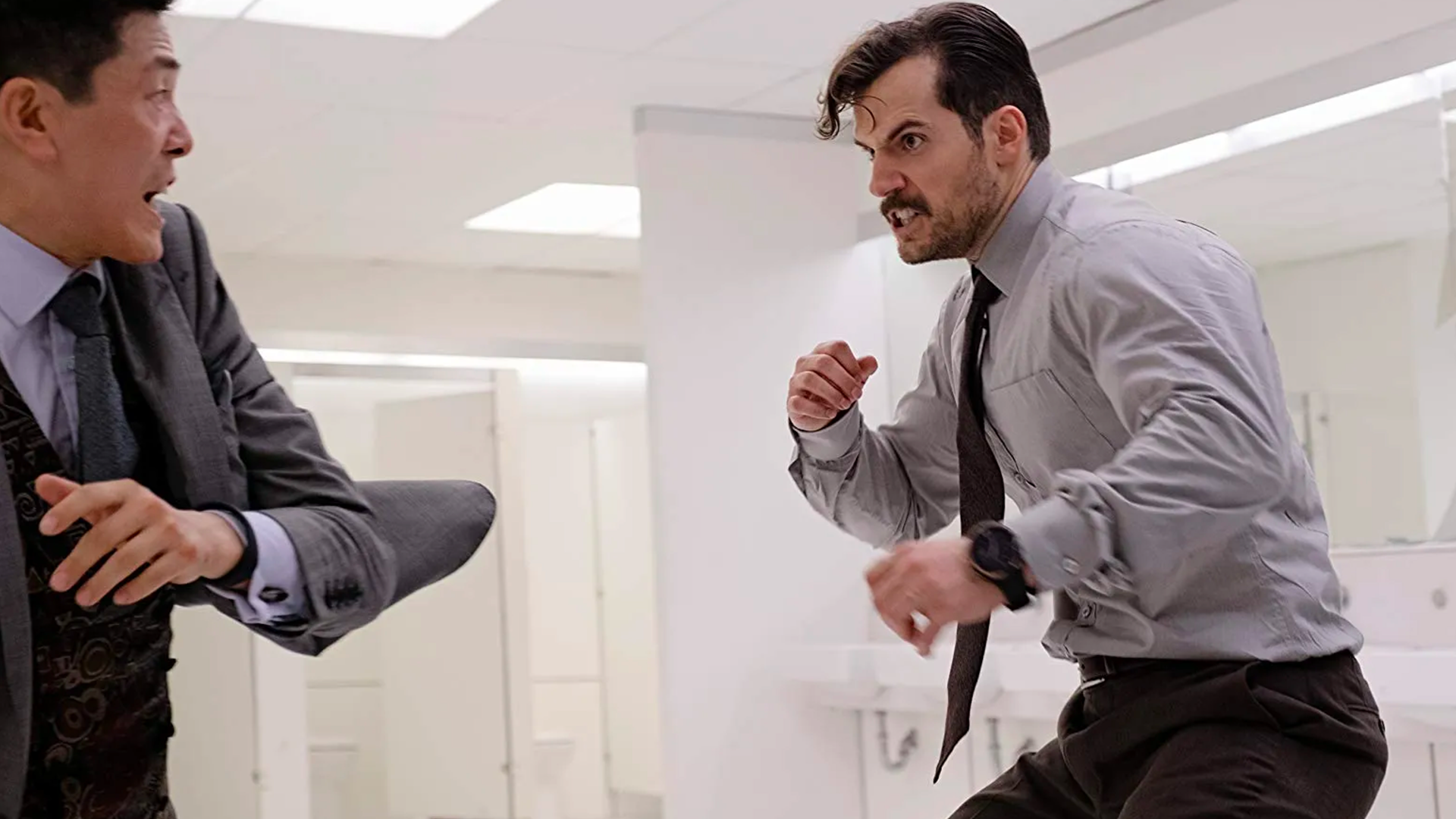
Mission: Impossible – Fallout
Bathroom fight
The “Mission: Impossible” series has become known for Tom Cruise doing increasingly dangerous stunts, but the sixth installment in the franchise also has one of the most iconic fight scenes in recent movie history. Taking place in the bathroom of a night club, the fight is a two-on-one brawl between Cruise’s Ethan Hunt, Henry Cavill’s muscular American agent August Walker and their target.
Hinson says the location is partly the star of the show. Setting it in a bathroom grounds the super spy theatrics and also provides opportunities to break glass, tile and plenty of other things. The fight showcases a clash of styles too between Walker’s boxing-inspired punches, Hunt’s “anything to get the job done as quickly as possible” approach and their target’s clear martial arts advantage.
But what makes the scene really work for Hinson is how it makes the protagonists vulnerable.
“You want the protagonist to be flawed and fallible despite their proficiency as a fighter,” he says. “I think a lot of times as an audience member we kind of project ourselves into that protagonist, so it kind of makes me feel a little bit closer connected because I would probably be getting my butt kicked in this situation too.”
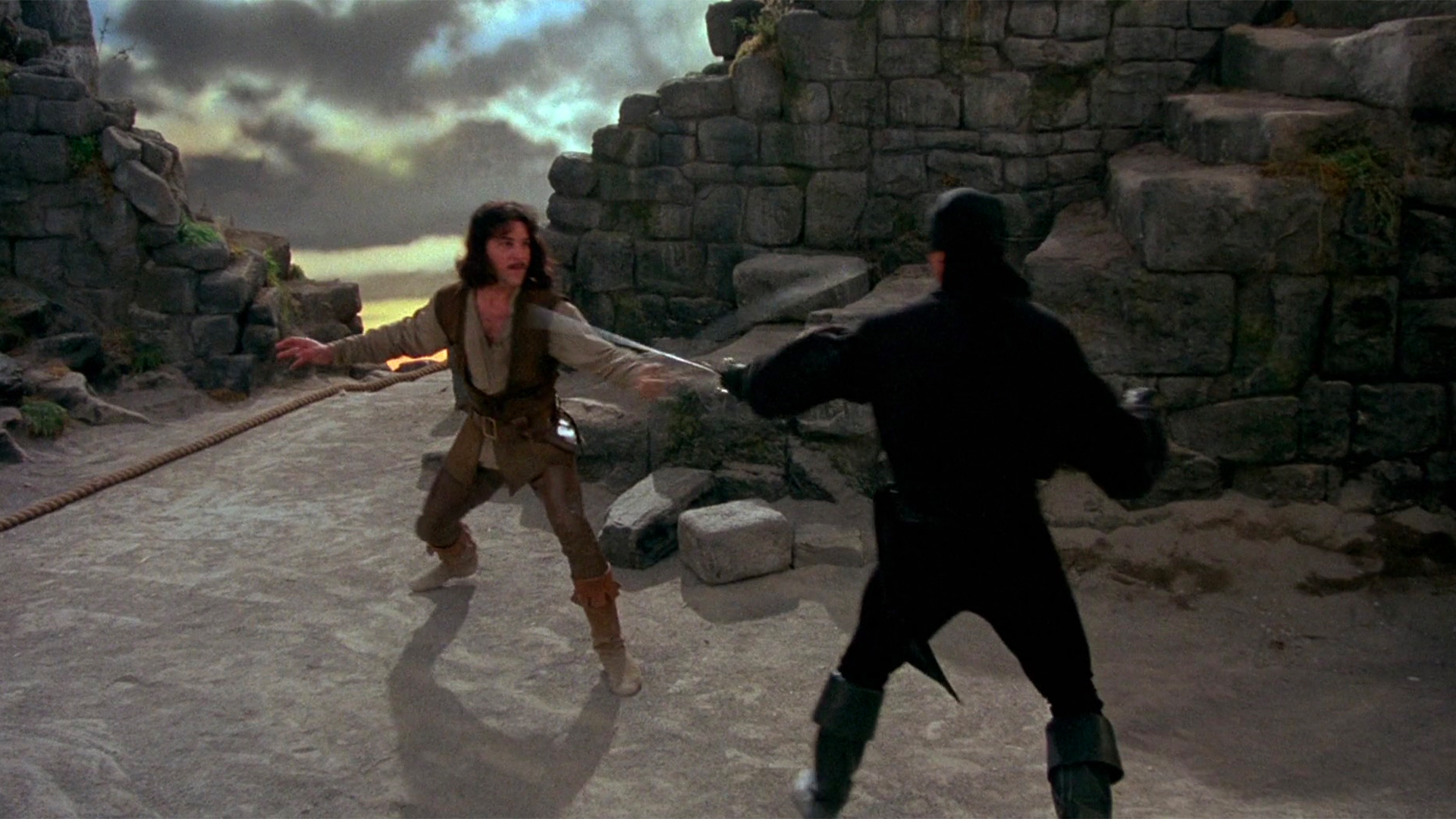
The Princess Bride
Inigo Montoya mountaintop fight
Not every fight needs to be so serious. Even in violent action movies like “John Wick,” comedy is a useful way of giving audiences a chance to breathe between all the punching, kicking, stabbing or shooting.
“It is interesting to see these ultra-confident characters have that confidence challenged in a way that takes them off of their footing quite literally,” Hinson says. “And you just get a chance to empathize with them and chuckle with them as they have to problem-solve in real time.”
“There is something about letting out a breath of air after the sword whizzes centimeters away from one of the character’s faces and you’re still able to chuckle,” he adds. “It’s a fine line to walk though, and they do it perfectly. And I think that that’s been copied a lot over the years.”
But Hinson says very few films use comedy in fight scenes as well as “The Princess Bride.” The mountaintop fight between Cary Elwes’s hero Westley and Mandy Patinkin’s revenge-driven Inigo Montoya is a swashbuckling duel that never takes itself too seriously but still delivers on everything a good duel should, Hinsons says.

The Matrix
Neo vs. Agent Smith fight
Mixing science fiction with martial arts cinema and a new kind of slow-motion action, “The Matrix” stands apart as one of the most influential and groundbreaking modern action movies.
Hinson says the climactic fight between Neo, the hero played by Keanu Reeves, and the villainous Agent Smith (Hugo Weaving) is a lesson in all the things, both small and large, that go into elevating a fight scene.
As a fight choreographer, Hinson says he is always looking for creative, compelling and exciting ways to control space and time on stage. The slow-motion “bullet time” in “The Matrix” masterfully does both at the same time, taking the action from “grounded to a place of poetry.”
The fight also has a strong rhythm –– camera shots during the fight that punctuate like drum beats and moments where Neo and Smith separate and take a breath before jumping back into the fray. And that rhythm becomes essential for showing how much Neo has grown and learned over the course of the movie, according to Hinson.
“The sort of structure of acting usually is like I try to do something to change the other person, I fail, I notice that I fail and I try something else,” Hinson says. “So, I think that that happens a lot in these fights, in these moments of … a pause. I had a teacher who would call them a pause because it’s not where things stop at all. It’s just a moment to pivot into the next moment. [These] are wonderful places for those changes to happen.”
Cody Mello-Klein is a Northeastern Global News reporter. Email him at c.mello-klein@northeastern.edu. Follow him on X/Twitter @Proelectioneer.



